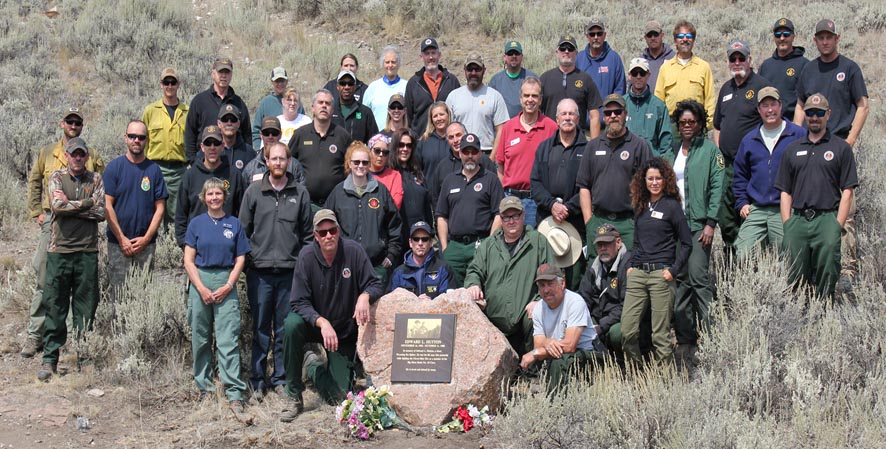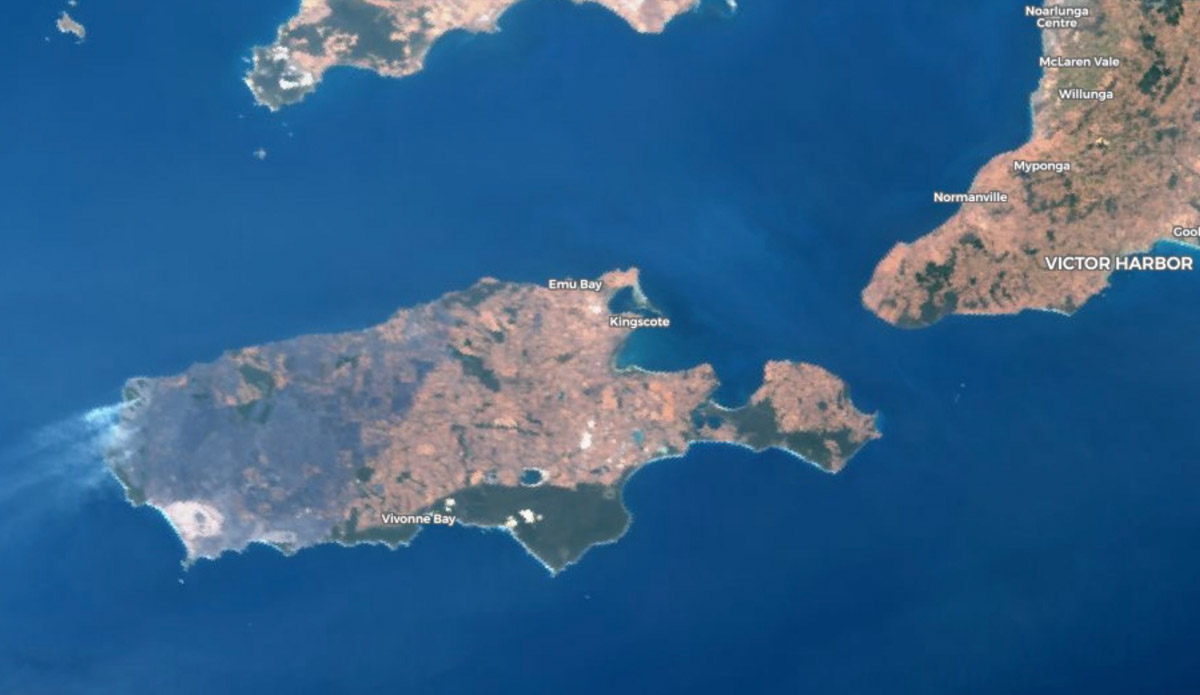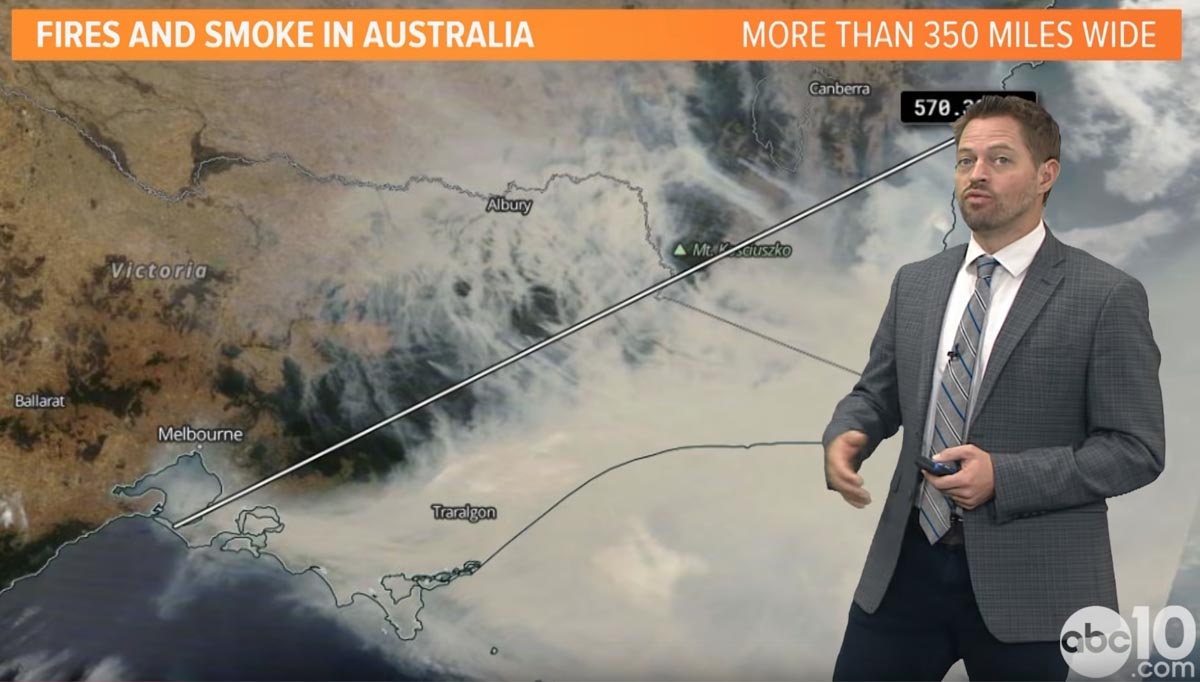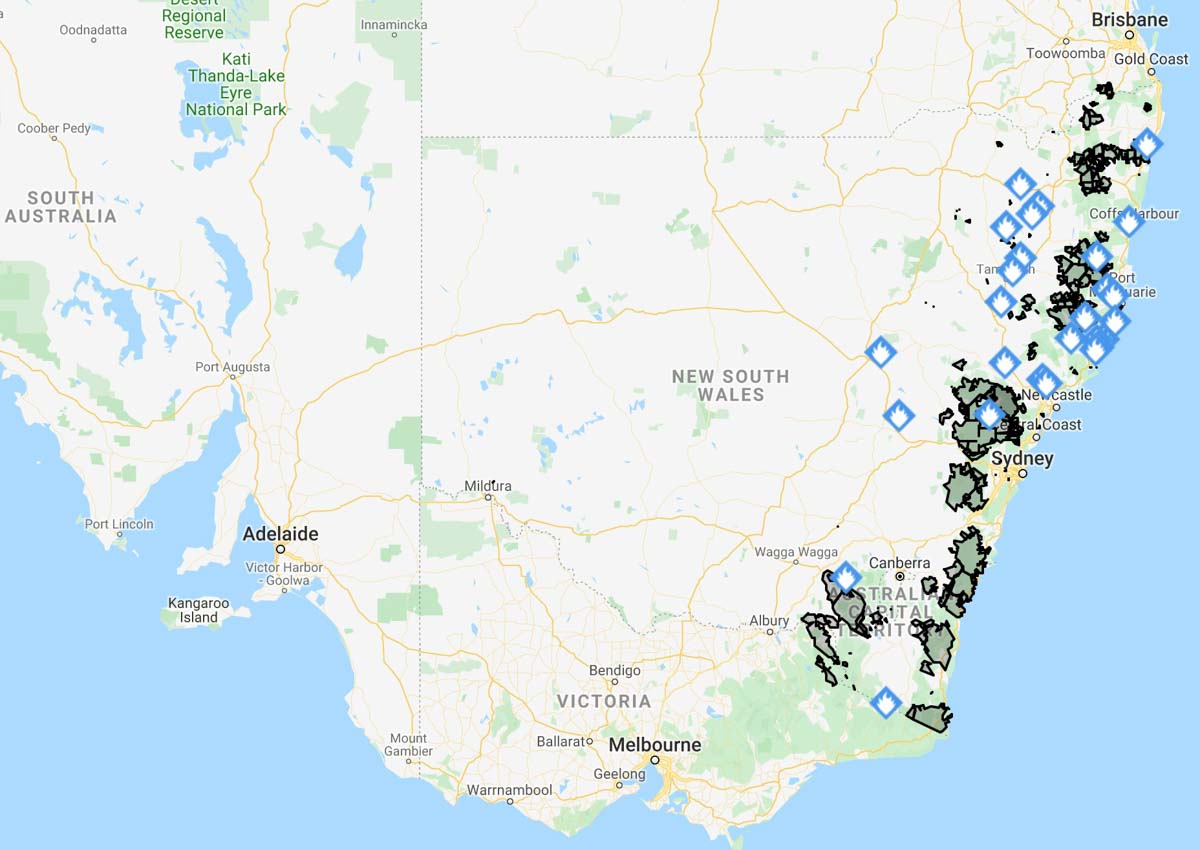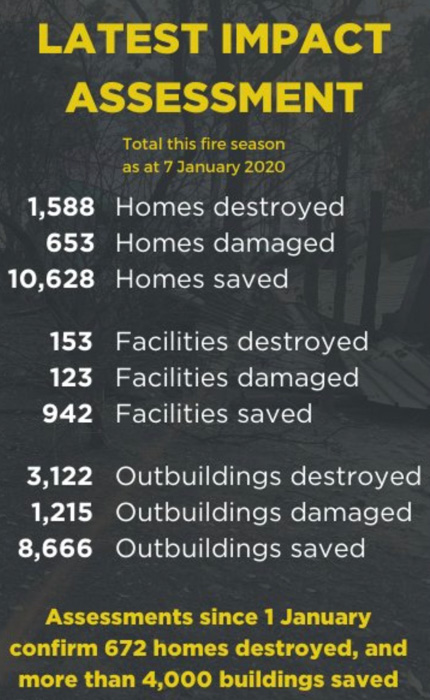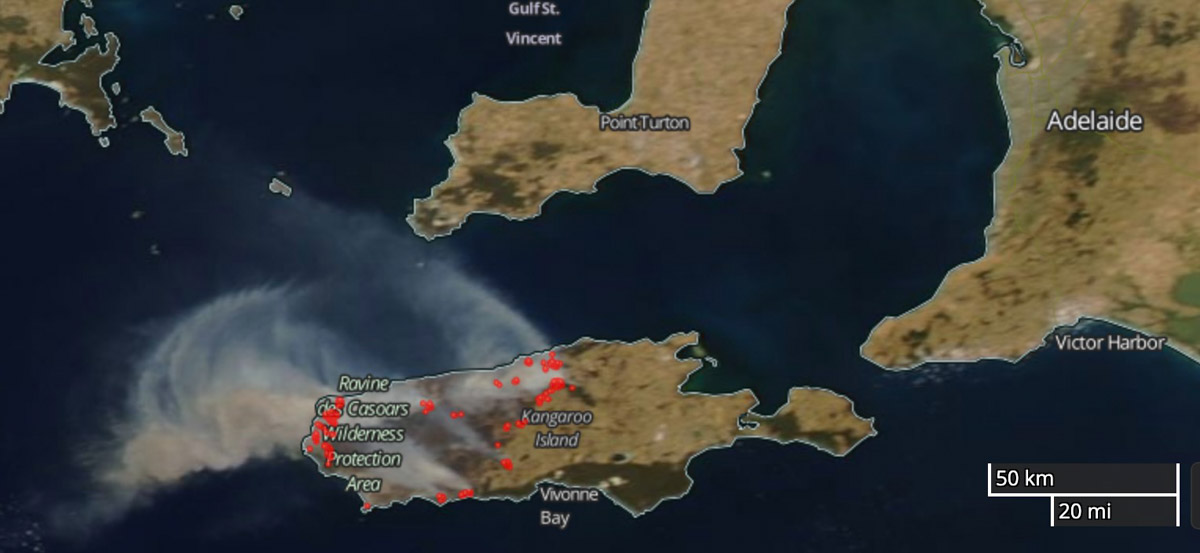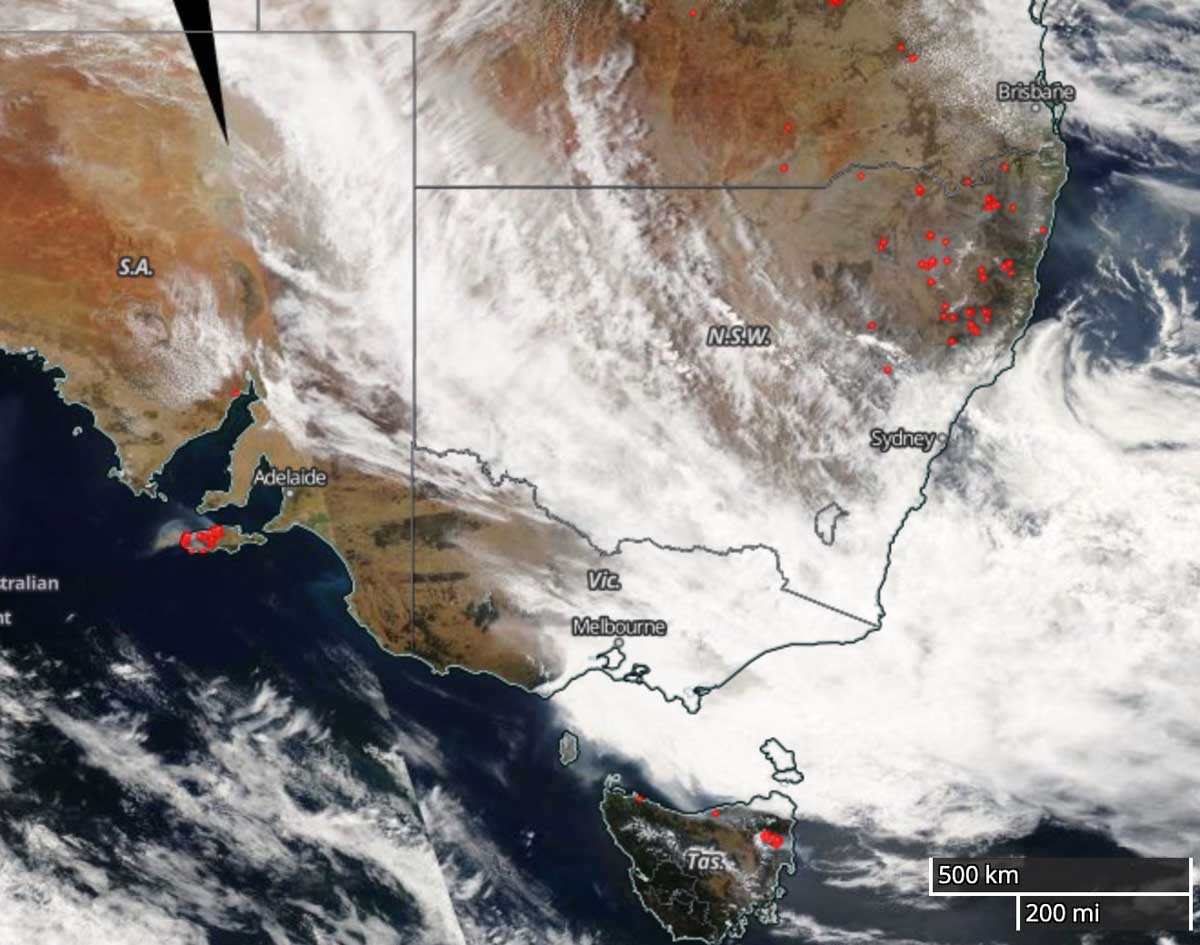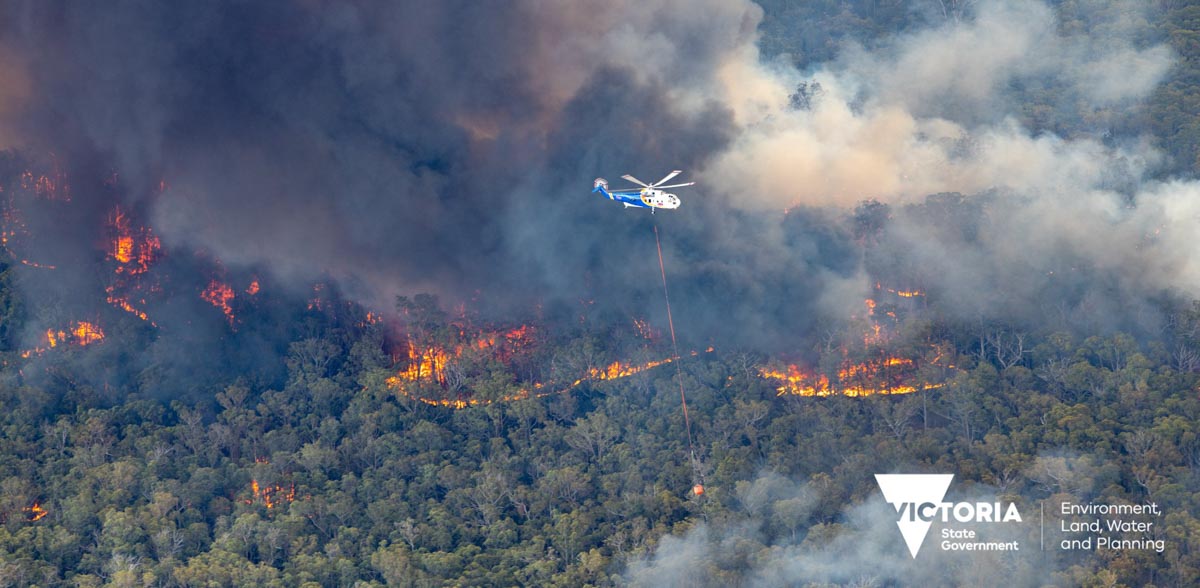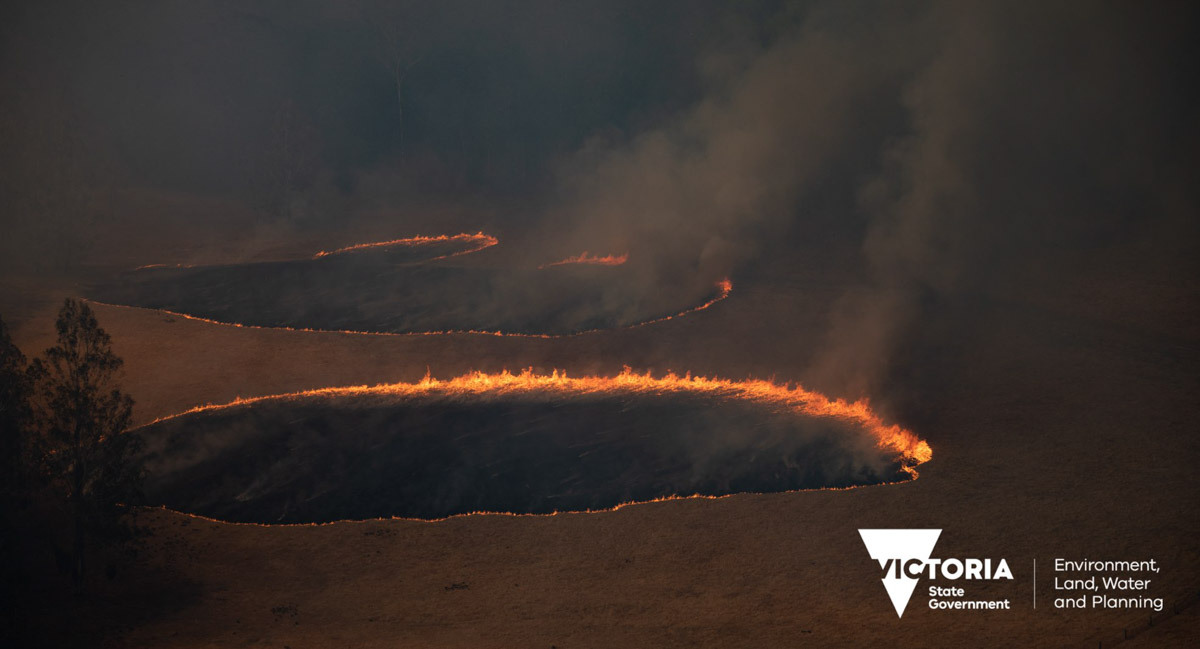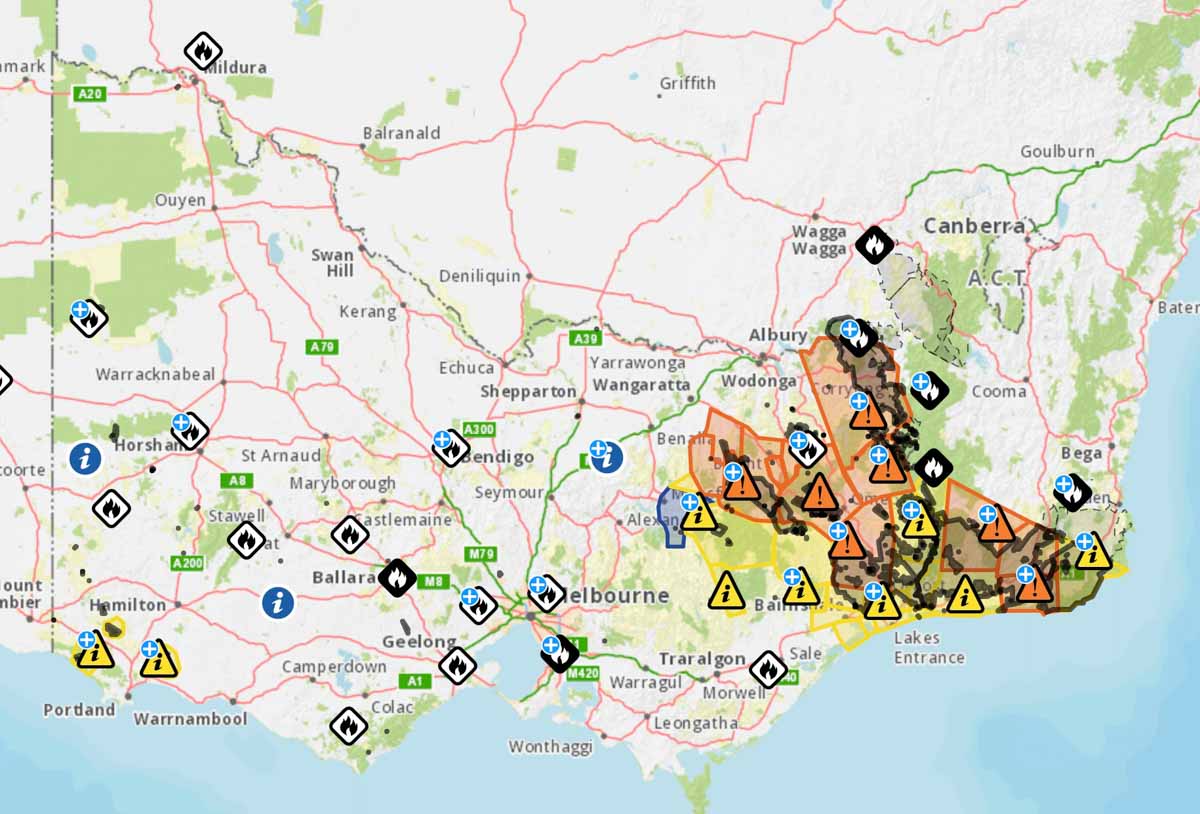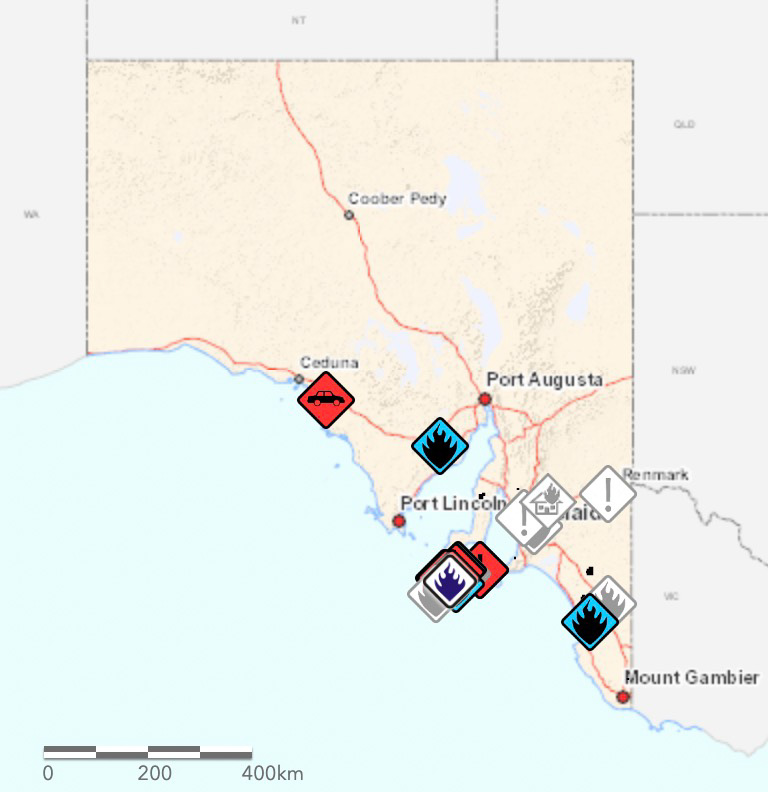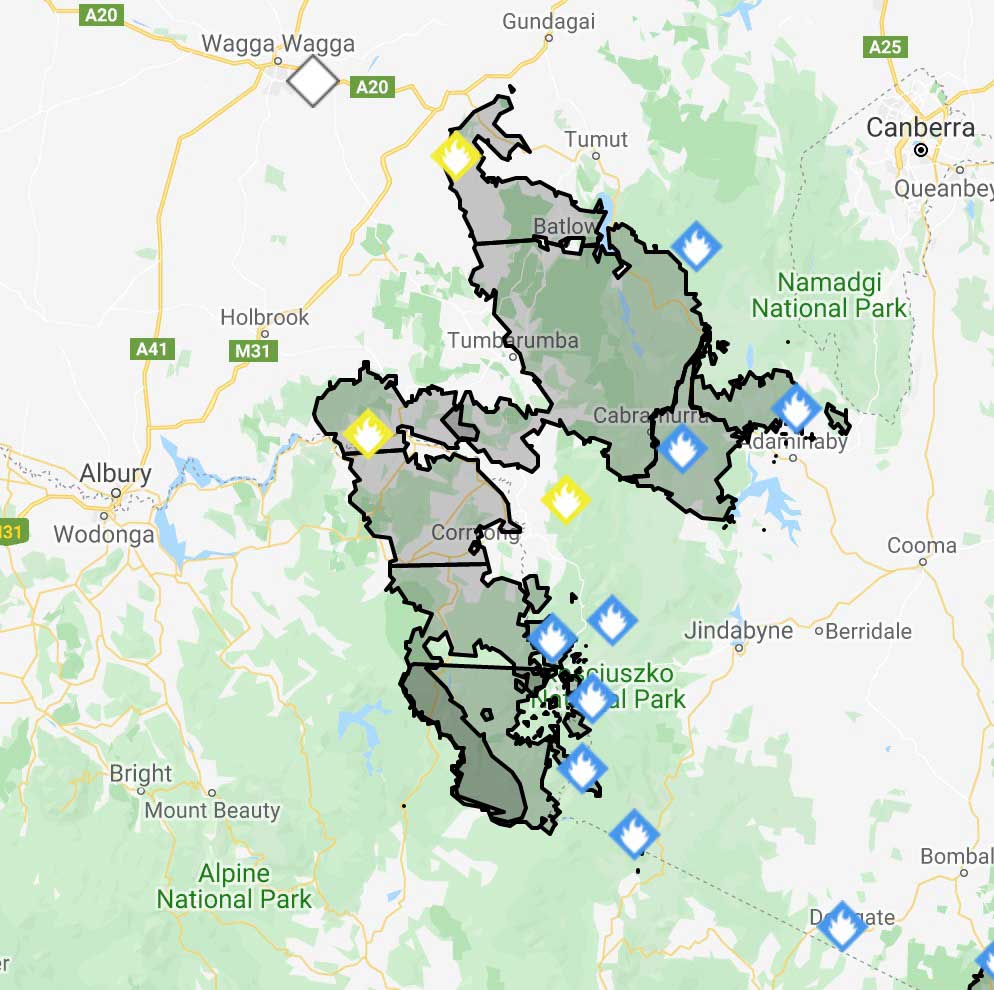
Six bushfires in two Australian states have merged, forming a huge blaze covering 1,532,484 acres (632,315 hectares) slightly smaller than the size of Delaware in the United States. The fires in Victoria and New South Wales met near Jingellic NSW between Canberra and Albury.
NAME HECTARES
Dunns Road, 316,754
Doubtful Gap Trail, 48,918
Adaminaby Complex, 28,640
Green Valley, Talmalmo, 233,390
Mount Youngal, 1,000
Pilot Lookout, 3,613
TOTAL: 632,315 hectares (1,532,484 acres)
Below is an excerpt from an article at the Australian Broadcasting Corporation updated Friday night local time:
Firefighters are bracing for a difficult night ahead amid the formation of a second “mega-blaze” and a southerly change sweeping up the New South Wales coast, bringing gusts of up to 90 kilometres per hour.
Emergency warnings were issued earlier for the Dunns Road fire burning near Ellerslie and Tarcutta in the Snowy Valleys, as well as the Green Valley Talmalmo fire and the adjoining East Ournie Creek fire, burning east of Albury.
All three fires have now joined to form the state’s second “mega-blaze” and now covers more than 640,000 hectares, straddling the New South Wales and Victorian borders.
However, these blazes had all been downgraded to watch and act overnight. In total, four fires were at watch and act level last night, including the Erskine Creek blaze burning south of Leura and Wentworth Falls in the Blue Mountains.
NSW Rural Fire Service Inspector Ben Shepherd said warnings for the blaze had been upgraded in anticipation of the southerly hitting the area around midnight and he warned residents to monitor conditions as the front moved through.
In a Facebook post, Blue Mountains Mayor Mark Greenhill told locals it had been a “hard day” for the region ahead of a “night of vigilance for us all”.
“We were worried it would be a hard day. That has been the case,” he wrote.
“We have had fire activity in the Grose Valley a few kilometres from Faulconbridge. This was air-attacked throughout the afternoon. Work will continue tomorrow.
“Crews are working hard to manage this activity. They will have a long night … I am sorry the news is not better but tonight is a night of vigilance for us all.”
NASA has released an animation showing smoke from the Australian fires reaching across the Pacific to South America.
NASA’s description of the video:
“The animation shows RGB color images from NASA’s Moderate Resolution Imaging Spectroradiometer (MODIS) instrument on NASA’s Aqua satellite for December 31, 2019 through January 5, 2020. A plume of brown smoke extends from the southeastern coast of Australia, over the Tasman Sea and beyond into the Pacific Ocean.
“The overlaid vertical cross sections show CALIPSO lidar observations for these same days. The bright colors indicate the presence of small particles (aerosols) and the white color indicates clouds. Visible in each of the cross sections near 40 degrees south is a thick layer of smoke from the fires at altitudes above 9 miles (14.5 km). The dark shading below these layers is due to the absence of lidar signals below the opaque smoke layers. These layers contain very small particles and have optical properties similar to smoke.
“The sequence of CALIPSO and MODIS tracks in the animation indicates the continued transport of the smoke layer to the east. As of Jan. 5, 2020, smoke was detected more than 4,000 miles from the source.
“Credit: NASA Langley/Roman Kowch”

